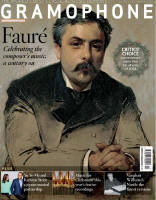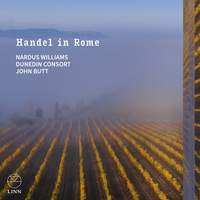Texte paru dans: / Appeared in:
|
|
|
|
|
|
Putting together three of Handel’s early Roman cantatas is a tried and tested formula, although John Butt and the Dunedin Consort never tread upon musical ground complacently. Qual ti riveggio, oh Dio (written sometime in 1707) narrates
Hero’s anguish and suicide after Leander has drowned. Nardus Williams embraces lurching dissonant tensions throughout the tempestuous ‘Empio mare, onde crudeli’, and she is unafraid to exploit tuning and colours to characterise Hero’s unravelling state of mind (I am less keen on her going up the octave at the aria’s final cadence). The soprano’s tautly sprung portrayal of bitterness in ‘Se la morte non vorrà’ is shadowed intricately by pairs of oboes and cellos. The world of Handel’s greatest London operatic laments feels closer than usual in the desolate pathos of ‘Si muora, si muora’.
Armida abbandonata (June 1707) is an emotive trajectory through anxious trepidation, loneliness, vengeful fury (and instant regret of it) and heartbreak. The forsaken Armida’s footsteps in the opening recitative are accompanied solely by Matthew Truscott’s lightly precise violin arpeggiations. The lament ‘Ah, crudele! e pur ten vai’, accompanied sensitively by theorbist Elizabeth Kenny and cellist Jonathan Manson, contrasts vividly with the turbulent ‘Venti, fermate, sì’ (the sorceress desperately revoking her command for sea monsters to destroy Rinaldo’s ship). The disconsolate siciliano ‘In tanti affanni miei’ is delivered with touching dramatic commitment.
Handel’s setting of Cardinal Pamphili’s moralising poem Tra le fiamme (possibly mid-1708) is interpreted with a harsh edge that emphasises the jeopardy of a moth attracted fatally to a flame, just as Icarus flew too close to the sun. The opening number’s interplay between recorders, oboe and elaborate viola da gamba is captivatingly spirited, although I wonder if Handel had something more pastorally relaxed in mind. The ensuing blend of Arcadian nature imagery and vanitas vanitatum warning is treated quasitheatrically, particularly Williams’s sparkling feistiness partnered by Manson’s dizzying viola da gamba runs (‘Voli per l’aria chi può volare’). The journey ends with Bellezza’s renunciation of worldly pleasure in favour of godly asceticism at the close of Handel’s first oratorio Il trionfo del Tempo e del Disinganno (1707). The paradox of extravagance and virtuous simplicity is realised serenely in the tiptoeing dialogue between Wiliams and violinist Truscott (an exquisite concertante part that Handel tailored for Corelli). Here, and occasionally elsewhere, an element of brittleness and insecure tuning undermine Williams’s admirable artistry, yet on the whole intelligent music-making from all contributors offers rewarding fresh ideas. |
|




